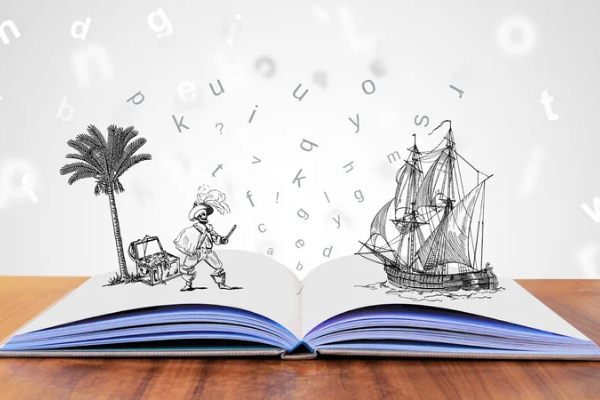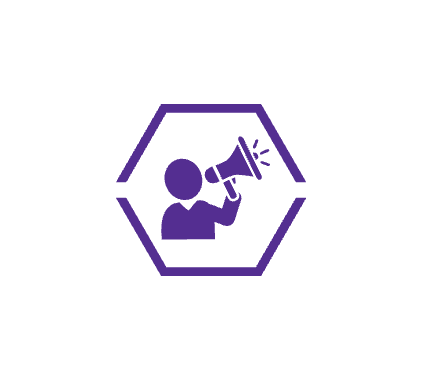How to Use Storytelling in Your Sales Presentation

Any sales presentation worth its salt should grab the audience’s attention and interest them in the product. All too often, however, generic and inauthentic sales presentations can have the opposite effect—causing potential customers to switch off and lose interest. Thankfully, however, there is one sure-fire way to make a presentation personalised, unique, and impactful: storytelling.
Perhaps the single most essential factor in creating an effective sales presentation good storytelling ensures your audience remains interested throughout. The engagement such an approach creates leads to more interaction and conversation surrounding your product or service—and potentially more conversions.
Of course, ensuring a sales presentation tells a story is far easier said than done. In this blog, we’ll detail four important tips for integrating storytelling into your sales presentations to drive sales and improve customer loyalty.
Give Your Presentation Structure
A sales presentation needs a clear and focused structure if an audience is to follow along. By structuring it as a story with an arc, the chances of your audience connecting with the presentation rapidly increase. Indeed, research shows that facts are approximately 22 times more likely to be remembered if they are part of a story.
A basic story has three main parts — the beginning, middle, and end — so salespeople should make sure their presentation has that as a foundation. The introduction needs to be brief yet captivating, catching an audience’s attention immediately—with an intriguing statistic, for instance. The middle should be centred around overcoming a challenge relevant to the audience. That might involve describing the problems they may encounter without the help of the product or service in question.
The conclusion of a presentation should make the most impact. It should connect the product or service being sold to the issues being discussed and is the perfect chance to demonstrate how a business answers their problems. A conclusion should wrap everything up, summarise the main points, and end on a strong and memorable note.
Appeal to Emotion and Personality
A sales presentation also allows a salesperson to humanise their brand. A personable sales presentation gives customers a better impression than one that seems just a thinly veiled attempt at extracting their money. While it’s necessary to delve into the technical specifications of a product or service, that can’t take up the entire presentation. The best presentations need to be an equilibrium between technicalities and personality, which is where storytelling comes in.
One of the primary reasons sales presentations are so effective in marketing is that they trigger an emotional response. Emotions, not logic, drive people’s purchasing decisions—with one study suggesting that 95% of all purchase decision-making occurs in the subconscious mind. All good stories are rooted in emotion, and sales presentations are no different. By thinking about their audience’s personal goals or pain points, salespeople can use that to their advantage when crafting a presentation.
Another way to elicit an emotional response is to create conflict and suspense in a presentation—classic storytelling tactics that fit well with sales presentations. The best stories begin with a hook, and the conflict throughout creates interest and keeps your audience invested in your story.
Keep it Brief and Engaging
Even with captivating storytelling, people lose interest if a presentation is too long-winded. While it is easy to get carried away with a good story, or even veer off-topic, keeping things brief and presenting only high-quality information offers more value to an audience. Incorporating stories into a sales presentation is intended to enhance them—not distract from them—so it is best to limit stories to just enough time to shake things up and pique an audience’s interest.
Working out the necessary length means first identifying the purpose of a presentation; if a salesperson can’t answer that question quickly and immediately, then it is unlikely that their audience will be able to as well. Sales presentations can leave a much better impression by conveying clear, brief, and concise information.
Practice, Don’t Memorise
It is worth remembering that a story is only as good as the one telling it. Presenters should avoid excessive memorisation of a script; doing so will come off as generic, monotonous, and disingenuous. Rather than putting paragraphs of information in a presentation, it’s best to use bullet points to guide the speaker—allowing them to be spontaneous and seem more authentic.
Quickly telling a story as a sidebar feels far more genuine and compelling than just rehearsing a presentation from a slideshow. Speakers need to be energetic, charismatic, and natural; a poorly told story will be boring and often lead to more questions than answers.
It is also important to adopt a philosophy of continuous improvement. By improvising a presentation slightly as they go and tailoring the content according to their audience, salespeople can find out what works best and then personalise the presentation for individual clients—giving it far more value than generic stories that clients can’t connect with.
Conclusion
Sales presentations must consider storytelling as a prime factor —from the moment they are written. While there is of course a need to include technical substance, there needs to be a balance between that and creating engagement through storytelling. Keep your audience intrigued by making sure the story you tell is well-structured, emotional, concise, and organic, and they are all the more likely to repay you in turn.

 Content Marketing
Content Marketing Messaging and Positioning Accelerator
Messaging and Positioning Accelerator Guest Expert Speaker
Guest Expert Speaker Reviews and Testimonials
Reviews and Testimonials Success Stories
Success Stories News, Awards & Recognition
News, Awards & Recognition Blog
Blog Podcast
Podcast